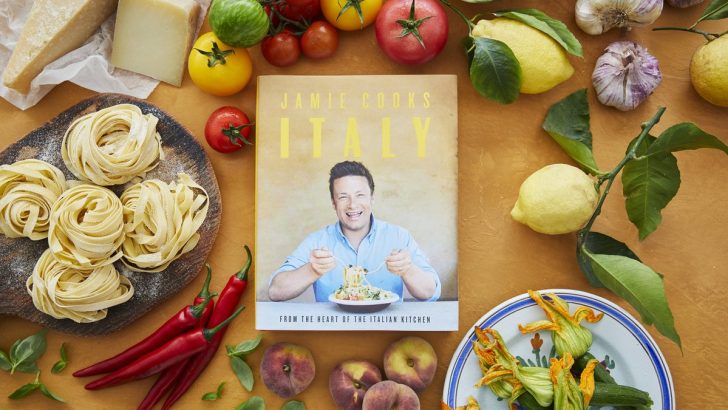Jamie Cooks Italy
by Jamie Oliver (Michael Joseph / Penguin, £26.00)
Jamie Oliver is perhaps one of the most popular TV chefs of the moment. But he has moved from the costly ingredients and exotic notions to helping ordinary families make the most of what they can afford to cook at home, or have to eat at school. This book sums up his experiences in a way through his love of Italian cooking and the Italian way of the table learned from his early mentors such as Gennaro Contaldo and Antonio Carluccio.
Over the last decades we have heard a great deal about the benefits of the ‘Mediterranean diet’, olive oil, tomatoes, fresh fruit and so on. But recent visits to Italy have shown me that the secret of this diet lies not so much in what Italians, but how they eat it.
Our group was on a visit to Padua. On the first night we were entertained in a local traditional restaurant. Initially there was some confusion over the menu and its presentation of the food.
The meal started with the anti-pasti, not the bloated affair now so common here, but a platter of small nibbles to rouse the appetite. This was followed by a small plate of pasta, but this was not as some imagined the main course. There was really no main course, but a series of small separate courses of meat, grilled vegetables and salad.
The point about eating the pasta first was that it entered the digestive tract, but was slow to move on as it took some digesting. This alerted the metabolism, which felt ‘full’, and so smaller amounts of the other courses were eaten.
So all those elegant Italian ladies and handsome men eat piles of supposedly ‘fattening’ pasta without getting fat. This is because they do not make a meal of it, but only a small part of a meal.
Needless to say the Italians also sit down in famiglia to eat. They take their time. They enjoy their food as a fixed part of daily family life.
Looking through Jamie Oliver’s book there is abundant evidence of this.
Note the presence of so many Nonnas, wise old grandmothers, with lots to say, fine things to cook, and a traditional view of the world.
All of this perhaps might be traced by some to a Catholic view of the family. Perhaps that is so. But in any case it shows once again, it is not what you eat, but how you eat it. And how you enjoy it.
Here in Ireland we are perhaps in danger of losing sight of the fact that the family that eats together – at a table at a regular hour – serves both health and family. A healthy mind in a healthy body certainly, but also all round a better way of life.
Jamie Cooks Italy may not be a crusading book, but it could be the best thing he has so far created.


 Peter Costello
Peter Costello Jamie Cooks Italy
Jamie Cooks Italy 